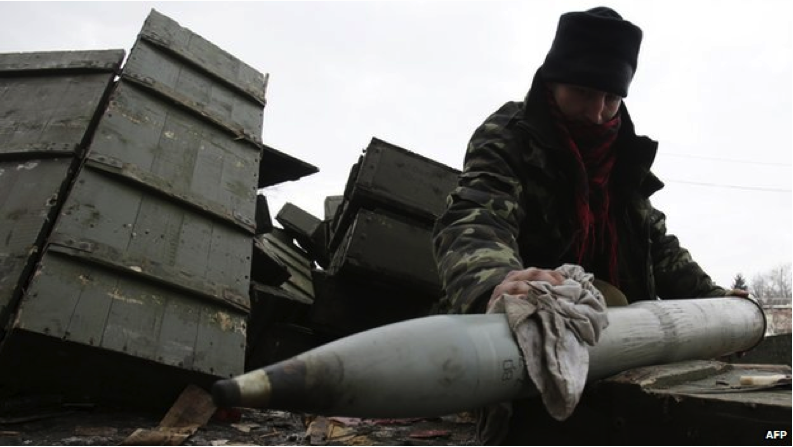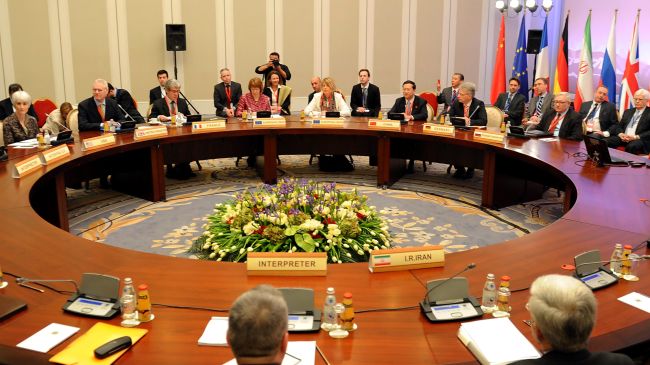Russia remains opposed to the deployment of a U.S. and NATO anti-ballistic missile (ABM) system in Europe, despite the shift from the planned installment of the Ground-Based Mid-Course Defense (GMD) to the European Phased Adaptive Approach (EPAA) and then to a truncated version of the latter. While GMD would have countered long-range missiles from the outset, interceptors capable of countering intercontinental ballistic missiles (ICBMs) were not part of the EPAA until its fourth phase, which would have taken effect in 2020 had the Obama administration not cancelled Phase IV of the program in March, 2011.
A recently declassified CIA Studies in Intelligence article details an earlier shift in ABM programs, namely the shift from the Reagan-era space-based Strategic Defense Initiative (SDI) to a narrower focus on ground-based ballistic missile defence (BMD) and theatre missile defence systems after 1991. While the publication date of the article has been redacted, it includes citations from as late as 2001. Appropriately titled “Different Times, Same Playbook,” the article illustrates the ways in which the security dynamics generated by missile defence programs have persisted notwithstanding changes in the European balance of power and the limited scope of ABM programs after the Cold War.
“Different Times, Same Playbook” notes that Yuri Andropov, the General-Secretary of the Communist Party of the Soviet Union between 1982 and 1984, contemplated increasing the number of Soviet offensive missiles, reinforcing missile silos, adding decoys to missiles, and surreptitiously deploying the feared SS-20 intermediate-range nuclear missile in response to SDI. These measures were meant to put pressure on the US to end the “Star Wars” program, but ultimately failed as a result of the constraints the arms race imposed on the Soviet command economy.
The shift in US military BMD policies since the end of the Cold War has not allayed Moscow’s concerns about its capacity for retaliation. Russian thinking on BMD is still informed by the view expressed by former Russian foreign minister, Igor Ivanov, in the September-October 2000 issue of Foreign Affairs, that even limited missile shields have “global potentials” built into them. The Studies in Intelligence article notes that America’s military ascendancy, Western involvement in the former Yugoslavia, and the expansion of NATO membership to include countries from Central and Eastern Europe all fueled Moscow’s BMD anxieties.
Moscow has responded to post-Cold War BMD plans with threats to deploy countermeasures, in a repeat of its response to SDI in the 1980s. The article recounts how Moscow hoped to increase the number of multiple independently-targeted re-entry vehicles (MIRVs) on the SS-27 Sickle, an ICBM designed to penetrate ABM defences. By 2016, Russia’s Strategic Missile Forces (SMFs) aim to deploy the RS-26 Rubezh, a missile Russia’s deputy prime minister dubbed an “ABM killer”. As it did in the 1980s, Moscow has initiated a diplomatic track designed to put pressure on Washington and its European allies to abandon proposals for an anti-missile system in Europe.
The playbook the CIA chronicles in Studies in Intelligence is not unique to Russia. In the 1960s the US introduced MIRVed Minuteman and Poseidon ballistic missiles in response to the deployment of the USSR’s ABM-1 Galosh, a limited anti-missile shield positioned around Moscow. In a well-known 1967 speech delivered in San Francisco, US Defense Secretary Robert McNamara declared that if the Soviet Union were to expand its ABM shield, the US would respond by further bolstering its offensive weapons arsenal with penetration aids.
In “Different Times, Same Playbook” CIA analysts note that in both the 1980s and 1990s, Moscow vowed to maintain its nuclear deterrent despite severe resource constraints. This remains the case even today. Last December, Putin announced plans to the Defence Ministry Board to add more than 50 ICBMs to the SMF arsenal in 2015 in order to maintain a “global balance and essentially rule out the possibility of a large-scale attack against Russia” even as the Russian economy struggles under the weight of sanctions and an oil price drop. Included in the build-up is the planned test-launch of the Sarmat, an ICBM that will replace the SS-18 Satan, a multi-warheaded mainstay of the Russian arsenal.
It took end-of-history hubris to assume that a missile defence system in Eastern Europe would not increase tensions on the continent. Against the backdrop of events in Ukraine, it will now take a formidable diplomatic effort to arrest a tit-for-tat missile dynamic between NATO and Russia. Not without reason does “Different Times, Same Playbook” have as its epigraph Santayana’s weighty reminder that those who do not remember history are condemned to repeat it.




